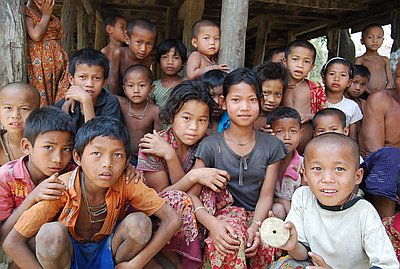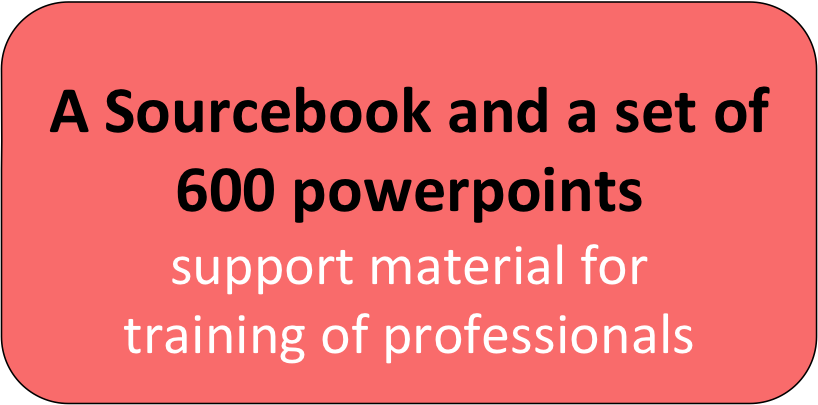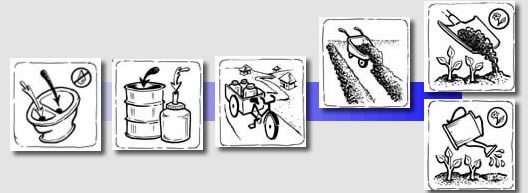Difference between revisions of "Sanitation Portal"
(→Field experiences) |
|||
| Line 1: | Line 1: | ||
| − | {{Language-box|english_link=Sanitation Portal|french_link=Portail d'Hygiène|spanish_link=Portal de Saneamiento}} | + | <!-- {{Language-box|english_link=Sanitation Portal|french_link=Portail d'Hygiène|spanish_link=Portal de Saneamiento}}--> |
[[Image:Sanitation4icons.png|right|100px]] | [[Image:Sanitation4icons.png|right|100px]] | ||
<small-title /> __NOTOC__ | <small-title /> __NOTOC__ | ||
Revision as of 16:56, 3 February 2014
This portal describes sanitation technologies which can be applied from the household level to the village level. A complete sanitation system does not consist of only one technology, but rather a chain of technologies, each taking care of a specific function, such as the toilet, transportation, and treatment. Each technology below is dedicated to one particular function in this chain. An example is given at the end of this page.
Below, sanitation technologies are presented in different functional groups: User interface (Toilets, urinals, handwashing), Collection and Storage / Local Treatment, Conveyance, (semi-) Centralized Treatment, and Use of products / disposal.
Jump to more Sanitation links and resources below.
Field experiences
These projects are utilizing sanitation techniques and are part of the project listing in Really Simple Reporting (RSR) on Akvo.org.
| Akvo RSR Project: Community-led WASH and Safe Motherhood
To enable 32717 extremely poor people including Ethnic Minority Groups (Men Women and Children) of 6218 households living in hard to reach areas in Lama Upazila in Bandarban district moving towards healthy life through access to WASH and safe motherhood. |
| Akvo RSR Project: Rainwater harvesting in Guinee Bissau
The project will take place in Tombali in southern Guinee-Bissau. The aim is to build 50 domestic rainwater harvesting tanks of 5000 l each and to train 10 masons. This is a part of our overall program in 2009 making 170 tanks and training 35 masons in constructing and maintaining watertanks and latrines. 50 tanks will serve 50 households of 16 members each during the dry season March, April, May and June. The result will reduce the burden of women, carry water over a distance of 2 - 4 km daily. |
Sanitation links and resources

- IRC Sanitation Pack - IRC Sanitation Pack, SanPack for short, contains an overview of available methods, techniques and tools in a low-cost, non-sewered sanitation service model. The materials have been developed and used by IRC and its long-standing and more recent partners in the South and the North in some 20 countries in Africa, Asia and Latin America.
- For a helpful sourcebook in the training of professionals for the sanitation and water sector, browse or download the set of animated PowerPoints called Sustainable Sanitation, by clicking the pink box below.
Sanitation systems
The table below lists eight different examples of sanitation systems, going from very simple to more complex. Of course, many other systems are possible, depending on the local context.
| 1 Single Pit System | 2 Waterless System with Alternating Pits | 3 Pour Flush System with Twin Pits | 4 Waterless System with Urine Diversion | 5 Blackwater Treatment System with Infiltration | 6 Blackwater Treatment System with Sewerage | 7 (Semi-) Centralized Treatment System | 8 Sewerage System with Urine Diversion |
Acknowledgements
- The majority of the material in this portal was adapted from: Tilley, E. et al. (2008). Compendium of Sanitation Systems and Technologies. Eawag: The Swiss Federal Institute of Aquatic Science and Technology, Dübendorf, Switzerland.
- Currently, WASTE is working on a Sanitation Decision Support tool, which will be integrated in this portal in the near future.
- Smart Sanitation Solutions produced in collaboration with Netherlands Water Partnership, WASTE, PRACTICA, IRC International Water and Sanitation Centre, SIMAWI and Partners voor Water





